Corn silage is unique compared to other multicut forage systems, such as alfalfa, as there is only one opportunity to harvest the crop annually. Therefore, farmers, agronomists, and agricultural professionals must dilligently monitor corn silage acres to identify the optimal harvest time to maximize forage yield and quality, as well as to ensure the proper moisture content for ensiling.
Estimating Average Dry Down Per Day
The average corn silage dry down rate in Wisconsin in September is assumed to be 0.5 percent per day. This rate of dry down is impacted by air temperature, wind speed, and relative humidity, as well as the hybrid, crop management, landscape position, and soil type. In dry condtions the daily dry down rate can be as high as 1 percent. The rate of dry down can also be impacted by ear development. Fields experiencing “tip back” or the lack of kernel development at the end of the ear, may dry down more quickly than the average dry down rate per day. In addition, fields with tip back may also be more susceptible to disease development in the unfilled portion of the corn ear and so, these fields should be monitored for disease development ahead of harvest.
Moisture Testing
To monitor field moisture levels, divide the field into representative groups and sample three to five whole plants in two or more locations within each representative group. Representative areas are often separated by areas of different crop growth stages, hybrids, and/or dry down rates. Whole plant samples should be collected at the planned chopping height. Collected samples should be placed in a sealed plastic bag, kept cool, and chopped and analyzed as soon as possible using NIR spectroscopy or dried using a Koster oven, microwave, or convection oven.
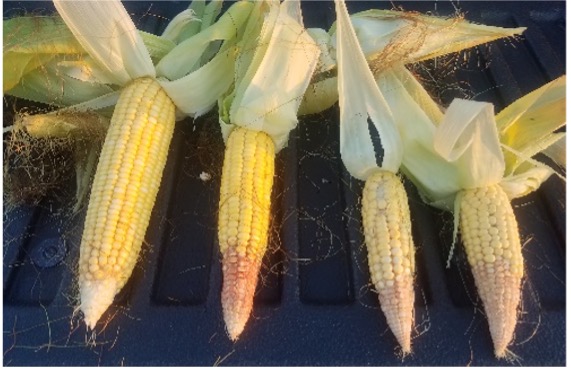
While NIR and convection oven moisture estimates can be used directly. Koster and microwave moisture results should be adjusted, as residual moisture may be left over in the sample after drying. It is recommended to add at least 2 percent moisture to Koster and microwave sample results to more accurately estimate actual field moisture contents. Additional residual moisture has been found in microwave and Koster dried samples when there is not a consistent dry down protocol being followed. Ideally, samples should be sent to a laboratory and compared to on-farm tests to determine the average residual moisture present.
Many local Forage Councils and agricultural cooperatives host corn silage dry down events, where samples can be chopped and either analyzed on site or sent to a local laboratory for moisture determination. Area Extension offices can often provide information on local dry down events.
Moisture test results from many area silage dry down events are available on the University of Wisconsin-Madison Division of Extension corn silage website.
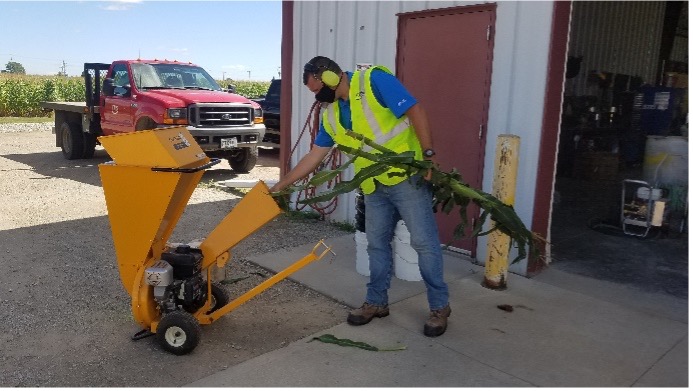
Using this information, farmers and agricultural professionals can compare current and historical results of corn silage samples based on location, hybrid maturity (short season vs. long season), and planting date (early or late).
Optimal Moisture Content at Harvest
| Silo Structure | Ideal Moisture Content at Harvest |
| Horizontal bunker/pile | 65 to 70% |
| Bag | 60 to 70% |
| Upright concrete stave | 60 to 65% |
| Upright oxygen limiting | 50 to 60% |
Ideal corn silage moisture at harvest varies by forage storage structure. Harvesting corn silage at the proper moisture content will promote proper packing, good fermentation, reduce unwanted mold development, and limit seepage losses.
Harvest Strategies for Fields with Uneven Moisture Contents
To harvest a field with uneven moisture contents, begin chopping when the majority of plants are at the correct moisture for the storage structure. If uneven plants are randomly scattered within a field, there should be minimal problems with fermentation, as the wetter and drier materials will be adequately mixed.
If a field contains large areas significantly wetter or drier than optimal, potential harvest options are based on row orientation. If a portion of the uneven area will be harvested with each pass of the chopper, mixing should occur and fermentation should continue with minimal problems. However, if the area is orientated to the rows so that the chopper does not move through wet and dry areas with each pass, then the areas should be segregated and harvested separately.

Harvest and Storage Management
Farms utilizing horizontal bunker silos and/or drive over piles should ensure the capacity of the packing tractors available matches the quantity of the forage being delivered to the storage site. Proper packing and fermentation will result in a final product that will remain stable until next year’s harvest.
Practices detailing the entire process of corn silage harvest management can be viewed at the links below
Predicting Harvest and Moisture Level – https://www.youtube.com/watch?v=nSk107L31bc&t=66s
Equipment Settings and Safety – https://www.youtube.com/watch?v=VocbEvDHqro
Processing, Packing, Storage, & Safety – https://www.youtube.com/watch?v=3-hNM8rgtns&t=41s


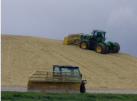


 Tools for Pricing Standing Corn Silage
Tools for Pricing Standing Corn Silage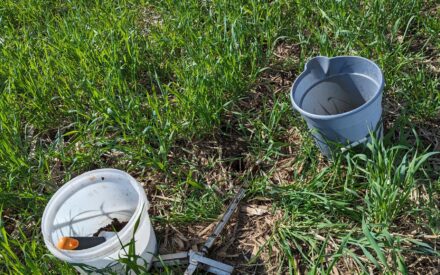 ▶ Evaluating MRTN Rates for Corn Grain and Silage After Manure Application
▶ Evaluating MRTN Rates for Corn Grain and Silage After Manure Application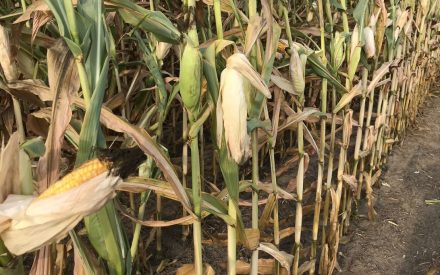 ▶ Practices to Optimize the Nutritive Value of Corn Silage
▶ Practices to Optimize the Nutritive Value of Corn Silage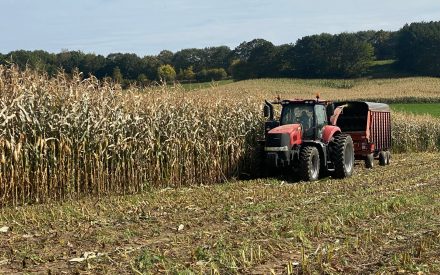 ▶ Explore the New Corn Silage Dry Down Monitoring Tool
▶ Explore the New Corn Silage Dry Down Monitoring Tool


